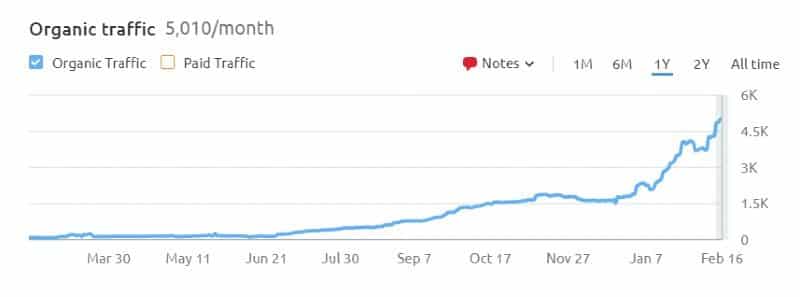Content is king, but only if it is fresh and applicable. As your website grows and changes, it’s important to periodically review and update your existing content to ensure it remains current and engaging. Updating your content can help improve search engine rankings, increase user engagement, and ultimately drive more traffic to your website.In this guide, we’ll cover everything you need to know about updating and refreshing existing content, including when to do it, how to do it, and why it’s so important.
Why Updating Existing Content is Crucial for SEO and User Engagement
First, let’s discuss why updating your existing content is so important. Search engines like Google prioritize fresh, relevant content over old, outdated content. When you update your existing content, you signal to search engines that your website is active and that you’re committed to providing high-quality, up-to-date information to your users.
In addition to improving your search engine rankings, updating your existing content can also help increase user engagement. If your content is outdated or no longer relevant, users may be less likely to engage with it, which can lead to a higher bounce rate and lower time on site. By updating your content, you can keep users engaged and on your website longer, which can ultimately lead to more conversions.

Signs That Your Existing Content Needs to Be Refreshed or Updated
Now that we’ve established why updating your existing content is important, let’s discuss how to identify
when it’s time to update your content. Here are some signs that your existing content needs to be refreshed or updated:
- Outdated Information: If your content includes information that is no longer accurate or relevant, it’s time to update it.
- Poor Engagement: If your content has a high bounce rate or low time on site, it may be time to update it to make it more engaging.
- Low Rankings: If your content is ranking poorly in search engines, updating it can help improve your rankings.
- Changing Industry Trends: If your industry or niche has undergone significant changes, your content may need to be updated to reflect these changes.
- Old Publication Date: If your content was published a long time ago and hasn’t been updated since, it may be time for a refresh.
-
The Benefits of Updating Existing Content: Improving Rankings, Traffic, and Engagement

As we mentioned earlier, updating your existing content can have numerous benefits for your website, including improving your search engine rankings, increasing traffic, and boosting user engagement. Here’s a closer look at some of the key benefits of updating your content:
- Improved Rankings: When you update your content, you give search engines new content to crawl and index. This can help improve your rankings and visibility in search engine results pages (SERPs).
- Increased Traffic: When you update your content, you give users a reason to revisit your website. This can lead to increased traffic and higher engagement metrics.
- Better User Engagement: If your content is outdated or no longer relevant, users may be less likely to engage with it. By updating your content, you can make it more engaging and useful to your audience.
- Improved Brand Authority: When you provide up-to-date, high-quality content, you establish your brand as an authority in your industry or niche.

How to Prioritize Which Content to Update: Tips for Effective Content Auditing
Once you’ve identified the content that needs to be updated, it’s important to prioritize
which pieces to tackle first. Here are some tips for effective content auditing and prioritization:
Start with High-Traffic Pages: Begin by updating content on pages that receive the most traffic. This can help ensure that your updates have the greatest impact on your website’s overall performance.
Focus on Your Most Important Pages: Prioritize updating content on pages that are most important to your website’s goals. This could include pages that are essential for generating leads, promoting products, or providing important information to your audience.
Consider User Intent: Look at the user intent behind each piece of content to determine its priority for updating. For example, if a piece of content is meant to provide answers to frequently asked questions, you may want to prioritize updating it to ensure that it remains relevant and useful.
Evaluate Content Age: Review the age of each piece of content to determine whether it’s time for an update. Generally, content that is more than a year old may be in need of a refresh.
Check Your Analytics: Use website analytics tools to identify pages with high bounce rates or low engagement metrics. These pages may benefit from updates that make them more engaging and useful to your audience.
How to Refresh and Update Existing Content: Best Practices
Once you’ve prioritized which content to update, it’s time to start refreshing and optimizing it for improved performance. Here are some best practices for updating and refreshing your existing content:
Evaluate Your Headlines: Your headlines play a critical role in attracting users to your content. Consider updating your headlines to make them more compelling and attention-grabbing.
Check Your Facts: Review your content for accuracy and relevance. Ensure that all statistics, facts, and figures are up-to-date and reflective of the latest industry trends.
Improve Readability: Make your content more readable by breaking up large blocks of text into smaller paragraphs, using subheadings, and incorporating bullet points and numbered lists.
Add Multimedia: Adding images, videos, and other multimedia elements can help make your content more engaging and useful to your audience.
Optimize for SEO: Incorporate relevant keywords and metadata into your content to improve your search engine rankings.
Keep it Fresh: Once you’ve updated your content, continue to monitor it for accuracy and relevance. Consider setting up a schedule for regular updates to ensure that your content remains fresh and up-to-date.










